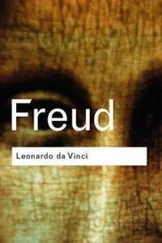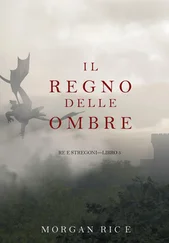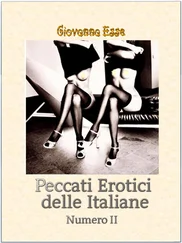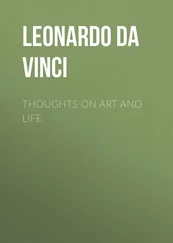Leonardo immersed himself in this vicious and discarded atmosphere, in a sort of silent protest against his father, considering the city of Florence as a source of inspiration, but also Sodom and Gomorrah. The young Leonardo appeared to his contemporaries as a young ancient divinity: he was tall, athletic, attractive in his behaviour, and dressed in an egocentric way, with a marked preference for bright colours. He wore long hair down to his shoulders and a beard, his head covered by a black hat typical of the guild. While his contemporaries preferred a short jacket to the typical close-fitting leggings, Leonardo preferred a tunic similar to a skirt, for all his life, that went down to his knees, a garment worn mainly by young men or by artists such as the one who with his intuitions is considered the father of Renaissance painting.
However, moving from Vinci to Florence was a traumatic experience for Leonardo. Shifting an entire existence from a contemplative village to the most vicious and transgressive of Italian cities, as Florence at that time was defined by the prelates of the church of Rome, was for Leonardo like opening pages of life unknown to him. The new spirit dominated everywhere with great repercussions on all human spheres. This was also noted in the new relationship that people had with their sexual sphere. Therefore, even the sexual practices once forbidden by the Church, which now, in this new context, seemed "natural", quickly spread here. For example, sodomy, which meant homosexuality in Florence, was widely used among artists, although it was strictly pursued by the Catholic Church as a "deviant form of sexuality”. As a deterrent draconian punishment, emasculation was flaunted. However, we can affirm that most Florentines had an unorthodox relationship with the commandments, often repugnant to the prohibitions and norms of the Catholic Church. In Florence, at times, a free spirit had spread, which in ancient Greece had characterized the School of philosophers in Athens, in which Socrates proposed new gods that, according to his political opponents, inciting the youth to revolution.
Leonardo also wanted to immerse himself in these dark and bright sides of the city. Also from the sexual point of view? It is very likely that this was the case. And it is also very unlikely that Leonardo would have subdued his sexual desire, which would have pushed his artistic genius to a greater development, as Sigmund Freud hypothesized in his famous essay "A childhood memory of Leonardo da Vinci". In a letter to Carl Gustav Jung, the Viennese founder of psychoanalysis wrote of "one of the greatest men of the Italian Renaissance" on October 7, 1909, just returned from a trip to America: "Since I came back, I have a fixed idea. The mystery of the character of Leonardo da Vinci is now suddenly completely clear to me.“ Freud then explained that Leonardo's unstable nature, marked by eternal boredom, dissatisfaction and restlessness, must surely be of a sexual nature, "psychoanalyzing" Leonardo in a posthumous sense. In a passage from his Atlantic Codex on the Flight of Birds, in which Leonardo tells of a childhood dream of a buzzard resting in its cradle, Freud interprets this dream as a metaphor for a sexual abuse suffered by the child Leonardo. It is clear, so Freud deduced, that here Leonardo refers to a suffered oral sex, because the tail of the buzzard in Leonardo's child's mouth is nothing more than a paraphrase of the male member. This story appears in a sense as a cryptogram of Leonardo's subconscious. In addition to the domination of the mother figure and the absence of the father, Freud saw this experience as the main reason for Leonardo's homosexuality. By the way, this thesis of Freud was based mainly on the reading of "The Romance of Leonardo da Vinci" by Dimitri Merezhkovskij that Maria Herzfeld translated into German, making a translation error perhaps not insignificant: he mistakenly translated the Florentine word "kite" as "vulture" instead of with the buzzard. Freud also concluded that the face of Leonardo Catherine's mother could be recognized in the ambivalent smile of the Mona Lisa. An amusing conglomerate of truth and poetry about Leonardo's sex life and its impact on his art and work. It is true that in Florence and Italy the male member is metaphorically paraphrased with the term "bird" and still is. In this regard, Freud's interpretation seems to have at least one starting point based on culture. But Leonardo himself has written in special registers in his diary that the "buzzard" for him clearly represented by his father Piero, who cannot bear the happiness and success of his illegitimate son and therefore, like a buzzard to his offspring, continues to deliberately cause pain and suffering.
But what kind of career should Leonardo have embarked on in Florence? From the beginning he didn't seem suitable for a career as a notary because he was unstable, lonely and rather undisciplined. It was due more to his artistic nature than to the difficulty of Latin. Because of his strong talent that was already emerging in painting, it was therefore almost obvious that he had to work in a workshop, in a workshop run by a great master in the city. Andrea del Verrocchio's Bottega, one of the most prestigious in Florence, seemed the most suitable. In addition to painting and sculpture, he trained his students as carpenters, mechanics, engineers and architects and was known for his great care and conscientious education. Here Leonardo soon put his talent as a painter to the test. Even his remarkable skills as a sculptor was soon praised by his teacher Andrea del Verrocchio. Mastery of the various disciplines of sculpture was also part of the compulsory training regime. However, surprisingly, hardly any work from the sculptor Leonardo are known.
In this workshop, Leonardo from the beginning was able to compete with other talented artists that Verrocchio had gathered around him with great care and diligence. These were excellent future artists such as Sandro Botticelli, Pietro Perugino and Lorenzo di Credi who later became the absolute protagonists of the history of Renaissance art. Especially with Pietro Perugino, in whose workshop Raphael would later work, Leonardo had an intimate and friendly relationship that went beyond the simple working relationship.
First of all, the training of Andrea del Verrocchio's shop involved drawing, which was practiced to such an extent that pupils would at one point reach a uniform formal language. This was the novelty of the training of Renaissance painters. It is precisely this strict principle of student training that Leonardo in turn had later rigorously insisted on even among his own students, which makes it so difficult for contemporary art historians to clearly attribute their respective works: recognize whether the works came from the hands of the master or talented pupil. This is probably the reason why painters of the time were not used to signing their works.
In the rival workshop of Domenico Ghirlandaio, who belonged to the guild of painters of San Luca already in 1472 and who also received his final touch in the workshop of Andrea del Verrocchio, some years later Michelangelo Buonarroti spent several important years of apprenticeship. Ghirlandaio had probably been an apprentice in the workshop of Bartolomeo di Stefano, who was actually a goldsmith. It is believed that he studied with both Benozzo Gozzoli and Filippo Lippi. However, with Alessio Baldavinotti he learned the techniques of painting and mosaic art. From 1480 Ghirlandaio was considered the most famous portrait painter of Florentine high society. With him Michelangelo also learned the technique of fresco painting, since Maestro Domenico Ghirlandaio had set new artistic standards in this ancient technique. He painted important scenes of frescoes on the lower walls of the Sistine Chapel in Rome, commissioned by Pope Sixtus IV, a quarter of a century before Michelangelo began his grandiose cycle of frescoes. But Domenico Ghirlandaio also painted magnificent frescoes in the Cappella Sassetti and Cappella Tornabuoni in Florence.
Читать дальше












